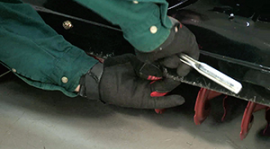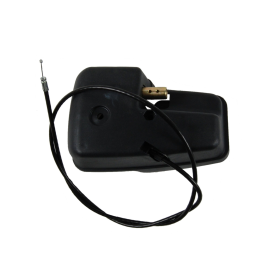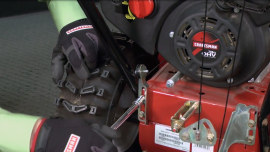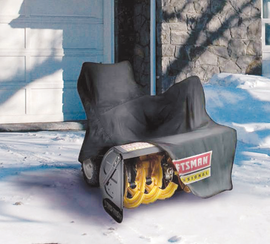- Kenmore refrigerator water filters
- Whirlpool refrigerator water filters
- Samsung refrigerator water filters
- GE refrigerator water filters
- LG refrigerator water filters
- Frigidaire refrigerator water filters
- KitchenAid refrigerator water filters
- Maytag refrigerator water filters
- Kenmore Elite refrigerator water filters
- Estate refrigerator water filters
- GE Profile refrigerator water filters
- Amana refrigerator water filters
- Bosch refrigerator water filters
- Dacor refrigerator water filters
- Electrolux refrigerator water filters
How to start a snowblower engine video


Cold weather can cause snowblower engine starting problems. The engine typically won’t fire right up and quickly gain full power in extremely cold weather.
Using the primer bulb and choke to efficiently start the snowblower engine in cold weather is a must.
Our video provides some tips for starting your snowblower in cold weather so you can quickly get started in clearing snow.
Starting the engine
Use the P-I-T-Ch—Pull method for efficiently starting your snowblower.
P—Prime the engine
Push the primer bulb 3 times for a cold start. Make sure that you cover the vent hole on the primer bulb when pressing it in.
Tip -- In cold weather, you may need to repeat priming if the engine doesn’t start. If the engine is warm, press the primer bulb only once.
I—Ignition is on
Push the key fully into the ignition switch. The engine won’t start if the key isn’t fully inserted in the switch.
T—Throttle in fast position
Move the throttle to the Fast or Rabbit position. This will provide enough fuel for the engine to start properly.
Ch—Choke is set properly
Move the choke to the Full Choke position for a cold engine start.
If the engine is warm, place the choke in the Run position.
Pull—Pull the starter roper (or push the starter button)
Use the starter to spin the engine.
Recoil starter. Pull gently on the starter cord until it begins to resist, and then pull quickly and forcefully to overcome the engine compression. The engine should start. Don’t release the handle and allow it to snap back into the recoil starter. Return the starter handle to its original position. If the engine doesn’t start, pull the starter cord again in the same manner.
Electric starter. Press the electric starter button to spin the engine. The engine should start. If the engine doesn’t start, push the starter button again.
After the engine starts
As the engine warms up, slowly rotate the choke to the Run position.
If the engine falters, restart the engine and rotate the choke knob to the 1/2-choke position. Allow the engine to run at 1/2-choke for a short period of time then slowly rotate the choke knob to the Run position.
Allow the engine to warm up for several minutes after starting. The engine will not develop full power until it reaches operating temperatures.
Frequently asked questions about starting a snowblower
Can I use starter fluid to help start my snowblower engine?
Once in a while, using a short burst of starter fluid to help start the engine should be okay for most snowblower engines. Check the owner’s manual for the engine or snowblower to see what the manufacturer recommends. Starter fluid can damage some snowblower engines. Using too much starter fluid or using starter fluid too often can cause engine damage. If you do use starter fluid, use it sparingly and only in small doses.
What causes my engine to stall a few seconds after starting?
When your snowblower starts then stalls, a clogged carburetor is likely causing the problem. Gasoline breaks down over time and leaves lacquer deposits inside the carburetor jets. Cleaning the carburetor and rebuilding it often fixes the problem so your snowblower stays running. Our How to Rebuild a Snowblower Carburetor Repair Guide/Video shows you how to remove and clean a carburetor on a common snowblower.
What can cause by snowblower engine to lock up?
Here are the common reasons that your snowblower engine will lock up—starting with the most common causes:
Hydrolock. Oil enters the cylinder when you tip the snowblower over for maintenance or cleaning. To solve this problem, remove the spark plug and spin the engine using the starter (recoil or electric starter) to eject the oil out of the sparkplug hole. Reinstall the spark plug and start the engine. The engine will likely sputter and smoke for a few minutes after starting but it should run fine after all the oil burns out of the cylinder.
Lack of oil. Check oil level regularly in you snowblower and fill the oil when it’s low. If oil drains out of the engine quickly after filling it up, then look for a leak in the oil pan or worn seals and gaskets.
Corrosion. The piston can seize up when the snowblower sits idle for a long time. You may be able to free up the cylinder by removing the spark plug and adding penetrating oil into the cylinder. Let the penetrating oil soak for a day then turn the flywheel back and forth to free up the piston.
Mechanical failures. Problems such as seized bearings or bad valves can cause the engine to seize up. When a major mechanical failure occurs, you’ll likely need to replace the engine or the entire snowblower.
Why does my snowblower engine spin but won’t start?
The snowblower engine needs gas, compression and spark to start, so if your snowblower isn't starting, focus on those.
First, make sure the gas in the tank is fresh; older gas can form gummy deposits that interfere with starting. Gummy deposits clog the carburetor so clean or replace the carburetor if it's clogged.
Check the fuel line and fuel filter and replace those components if clogged.
Another easy thing to check is the spark plug-if the spark plug is cracked or has a sooty electrode, replace it.
Check the stop switch and replace it if it isn't allowing the spark plug to get current. A good engine tune-up that includes an oil change may help the engine start.
Schedule service and have a technician diagnose and repair the snowblower if you can’t get it started after checking these issues.
Symptoms for gas snowblowers
Choose a symptom to see related snowblower repairs.
Main causes: broken shear pins, worn or loose auger drive belt, auger drive cable failure, damaged auger, bad gear case…
Main causes: clogged chute, snow build-up in auger housing, broken auger shear pins, auger drive belt needs adjustment, …
Main causes: stale gas, clogged carburetor, clogged or broken fuel line, dirty spark plug, bad rewind starter, incorrect…
Main causes: punctured tire, damaged rim…
Main causes: clogged chute, damaged auger blades, broken shear pins, worn auger belt, damaged gear case, engine problems…
Things to do: replace the spark plug, change the oil, rebuild the carburetor, adjust valve lash, adjust or replace the b…
Main causes: dirty carburetor, clogged fuel filter, dirty spark plug, incorrect valve lash, leaky engine gaskets…
Main causes: dirty carburetor, stale fuel…
Main causes: loose drive clutch cable, damaged drive clutch cable, worn friction disc, scraper blade scraping the ground…
Repair guides for gas snowblowers
These step-by-step repair guides will help you safely fix what’s broken on your snowblower.

How to replace a snowblower fuel filter
Replace the fuel filter on your snowblower if it's clogged or damaged.…
Repair difficulty
Time required
15 minutes or less

How to replace a snowblower shave plate
Follow the 7 easy steps in this repair guide/video to replace a worn out shave plate on your snowblower.…
Repair difficulty
Time required
15 minutes or less

How to replace a snowblower chute control gearbox assembly
Replace the chute control gearbox on your snowblower if it's stripped or damaged.…
Repair difficulty
Time required
15 minutes or less
Articles and videos for gas snowblowers
Use the advice and tips in these articles and videos to get the most out of your snowblower.

Find out how to clear chute obstructions, replace shear pins and adjust or replace your auger engagement cable if your s…

Find easy DIY tips to fix your snowblower when it won't start…

Protect your snowblower's engine and body by preparing it for after-season storage.…